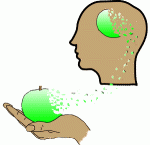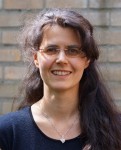Projects
We interact with objects all day, every day. When holding an object in the hand we receive information about this object from contact points distributed over the skin. We can exert forces on the object, move or rotate it in the hand. This results in an overwhelmingly complex stream of information. Our sensory system processes this information such that in the end we perceive an object. My mission is to understand how this process works.
Here are some of the things I have found out so far:
- Highly curved objects feel larger
- To rapidly find an object features like edges, rougness and temperature are important.
- For small numbers of object we don’t have to count them to know how many there are.
Projects:
 Perceptual grouping in touch
In this project I investigate how information is correctly grouped such that we can perceive the object. When we are holding two object information from the same object has to be grouped together while separating it from the information of the other object. While this is a highly complicated puzzle, our perceptual system performs this task effortlessly. I am investigating how this is accomplished. This project was funded by a VENI grant from NWO.
Perceiving with two hands
When holding an object with both hands, we receive some information twice. Once via the one hand and once via the other hand. I investigated how redundant perceptual information from the two hands is combined in collaboration with Marc Ernst at Bielefeld University in Germany. The project was funded by a Rubicon grant from NWO.
Judging numerosity
In vision it has been shown that small numbers of items (<4) can be enumerated fast and error-free. This process is usually referred to as subitizing and it is faster than counting. I have shown that similar behaviour exists when judging the number of items that we are holding in our hand.
Feature saliency
We often find the object we are searching for when we recognize a certain distinctive feature. For recognizing objects by touch especially features like edges, roughness and temperature are detected efficiently. This means that an object can be found with only course movements and through short contact.

